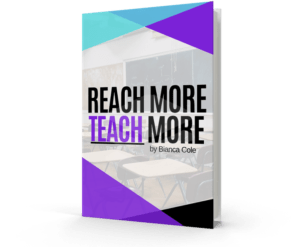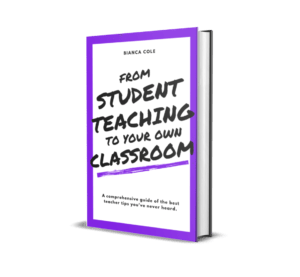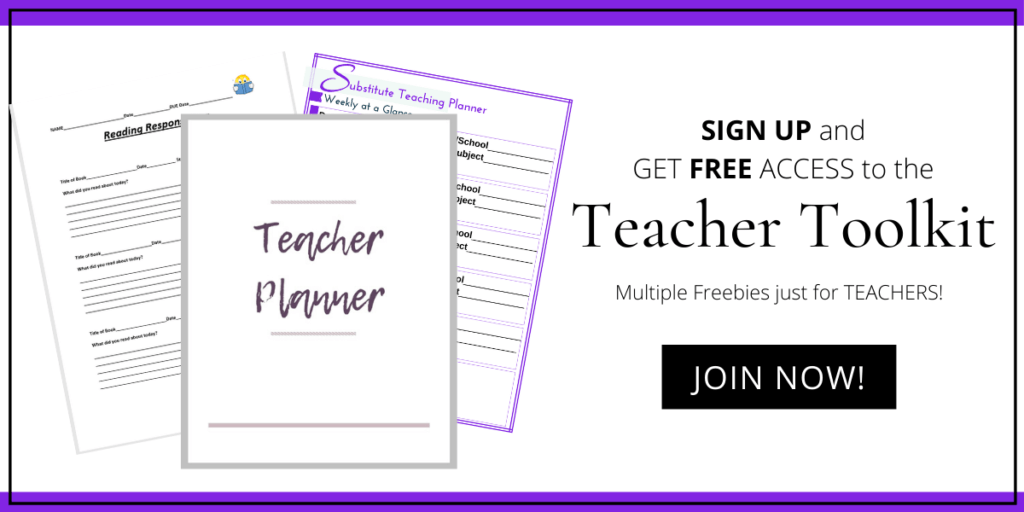When you are a teacher, it is hard to get your mind off teaching, especially in the summer. I know, it’s hard to believe but summer, in a teacher’s world, is still filled with planning and preparation, reflection, and a lot of reading.
For us, summer break means time to refuel, relax, and reinvigorate our mind. We reflect on the past school year and focus on the year ahead. And since we cannot always afford conferences, workshops, and travel, reading is our personal professional development. Reading is our everything during breaks!
To jump start your summer reading, I have 5 books that propel you to sharpen your teaching skills plus a few bonus books! These recommendations assisted me to tweak my own teaching strategies for the better. From managing classroom workshops models, to allowing students to track their inquiries to dig deeper in their text.
So, pull out those library cards or check out Amazon, don’t forget to set your summer reading goal (I always try to aim for at least 10 books) and get inspired to strengthen your mind.

This post may contain affiliate links. If you make a purchase, I may receive a small commission at no cost to you. Thank you!
Here are 5 simple recommendations to kick off your summer reading journey:
The Win-Win Classroom: A Fresh And Positive Look at Classroom Management -Jane Bluestein
“When it comes to student behavior challenges in the classroom, conventional practices and punitive discipline codes often fail to motivate students to change their attitudes or behavior. Recognized for defining a nontraditional approach that really works, Jane Bluestein offers educators ways to prevent discipline problems, build student accountability, and end frustrating power struggles with kids of all ages.”
Falling in Love with Close Reading Lessons for Analyzing Texts –and Life -Christopher Lehman & Kate Roberts
“Chris and Kate start with a powerful three-step close-reading ritual that students can apply to any text. Then they lay out practical, engaging lessons that not only guide students to independence in reading texts closely but also help them transfer this critical, analytical skill to media and even the lives they lead.
Responsive to students’ needs and field-tested in classrooms, these lessons include:
- strategies for close reading narratives, informational texts, and arguments
- suggestions for differentiation
- sample charts and student work from real classrooms
- connections to the Common Core State Standards
- a focus on viewing media and life in this same careful way.”
I Read It, but I Don’t Get It, Comprehension Strategies for Adolescent Readers –Cris Tovani
“I Read It, but I Don’t Get It is a practical, engaging account of how teachers can help adolescents develop new reading comprehension skills.
Cris Tovani is an accomplished teacher and staff developer who writes with verve and humor about the challenges of working with students at all levels of achievement—from those who have mastered the art of “fake reading” to college-bound juniors and seniors who struggle with the different demands of content-area textbooks and novels.”
Teaching Literacy in the Visible Learning Classroom – Douglas Fisher, Nancy Frey, & John Hattie
“In this sequel to their megawatt best seller Visible Learning for Literacy, Douglas Fisher, Nancy Frey, and John Hattie help you answer that question by sharing structures and tools for effective literacy instruction that have high-impact on learning—and insights on which stage of learning they have that high impact.
With their expert lessons, video clips, and online resources, you can deliver sustained, comprehensive experiences in phonics, guided reading, interactive writing, content-area discussions—in virtually all you teach:
- Mobilizing Visible Learning: Use lesson design strategies based on research that included 500 million plus students to develop self-regulating learners able to “see” the purpose of what they are learning—and their own progress.
- Teacher Clarity: Articulate daily learning intentions, success criteria, and other goals; understand what your learners understand, and design high-potency experiences for all students.
- Direct Instruction: Embrace modeling and scaffolding as a critical pathway for students to learn new skills and concepts.
- Teacher-Led Dialogic Instruction: Guide reading, writing, and thinking by using questioning and other teacher-led discussion techniques to help learners to clarify thinking, disagree respectfully, and reach consensus.
- Student-Led Dialogic Learning: Foster cognitive growth with peer-mediated learning —reciprocal teaching, QAR, fish bowl, and more.
- Independent Learning: Ensure that students deepen learning by designing relevant tasks that enable them to think metacognitively, set goals, and develop self-regulatory skills.
- Tools to Use to Determine Literacy Impact: Know what your impact truly is with these research-based formative assessments for K-5 learners.”
Academic Moves for Career and College Readiness -Jim Burke & Barry Gilmore
“Analyze, argue, compare/contrast, describe, determine, develop, evaluate, explain, imagine, integrate, interpret, organize, summarize, support, and transform . . .
Can a mere fifteen words turn today’s youth into the innovative, ambitious thinkers we need? Yes, contend Jim Burke and Barry Gilmore, coauthors of Academic Moves for College and Career Readiness, because these are the moves that make the mind work and students must learn if they’re to achieve academically. It’s that simple.
Or is it? To arrive at these fifteen critical reading, writing, and thinking processes, Jim and Barry combed through the standards, research, and secondary curriculum—and that’s for starters. Then, for each of these powerhouse processes, they developed a lesson structure, assignments, and activities so you can teach with potency, right away, and immediately cultivate in students discipline-specific habits of mind.”
Bonus Reads:
Reach More, Teach More– Bianca Cole (me!)

“Having trouble motivating students? Reaching students that are not engaged daily? Reach More, Teach More is an eBook from a current teacher’s perspective that provides strategies, interventions, and techniques, used to work with students of all backgrounds and academic levels. It focuses on each individual student learning in understanding what type of learner you have in your classroom and how to push them to personal motivation and satisfaction to achieve.”
With Reach More, Teach More, you will learn: as well as a workbook and lifetime access!
Chapter 1 – Get Out of Your Teaching Comfort Zone
Chapter 2 – Reach to Build
Chapter 3 – Behavior is Language: A New Classroom Management Plan
Chapter 4 – Simple Motivation & Engagement Strategies
Chapter 5 – Instruction & Delivery: What all Teachers Should Do?
Chapter 6 – Teacher Don’t Ignore Me! Reaching Special Needs Students
Chapter 7 – Diversity in the Classroom
Chapter 8 – Giving Every Student a 13 year Plan at Any Grade
From Student Teaching to Your Own Classroom– Bianca Cole
“Designed for aspiring and new teachers, From Student Teaching to Your Own Classroom is an eBook that:

- 100+ page eBook, packed with actionable tips and ideas for aspiring and new teachers.
- Will take you through the journey from student teaching, getting your first teaching job, and to your first classroom.
- Shares personal experiences, anecdotes, and quick tips to gain the insight and basic fundamentals for the road to a long and healthy career in teaching.
- An authentic and effective approach on teaching, that is easy to read and leaves you with pages of notes and outlines.
- Includes templates, guides, and resources that will save you time (especially for aspiring or new teachers that are just getting started in their career!).
- Includes resume templates, workbook planner, and first day procedures guide!”
Feedback That Moves Writers Forward-How to Escape Correcting Mode to Transform Student Writing– Patty McGee
“The number one challenge of student writers today isn’t word choice, logic, voice, or even grammar and spelling—it’s buy-in. In Feedback That Moves Writers Forward, Patty McGee shares how to’s for teaching that changes the writing-as-obligation vibe for good. She demonstrates the way feedback can inspire students to reach new heights as writers. With Patty’s help, you learn to:
- Resign from your position as Corrector-in-Chief and be amazed as students eagerly take over responsibility for refining their writing
- Apply the research on growth mindset and goal setting, whether you use a writing program or a workshop model
- Use tone, trust, and language to quicken students’ discovery of their writing identities and take risks when they are stuck
- Use student work to deliver clear, just-in-time feedback during planning, drafting, revising, and editing
- Use the online printable forms for delivering customized feedback with just the right wording
- Balance grading and feedback
- Help writers reflect so they are better able to apply what they learned about content, craft, and style to their future writing.”
What are you reading this summer? Please leave any recommendations down in the comments section. All reading genres are welcomed!









1 Comment on Top 5 Books for Teacher Summer Reading